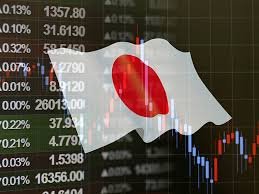Euro selling was conspicuous in the overseas market yesterday. The background was that expectations for a turnaround in Ukraine were declining. Images of the devastation in the towns around Kyiv have spread around the world, and Western nations are preparing further sanctions against Russia. It is feared that if a country that is highly dependent on Russian oil and natural gas, such as Germany, implements an embargo, it will cause a pain in recession. There was a history of euro selling progressing due to uncertainty about the European economy.
Also, buying Australian dollars is increasing today. The Bank of Australia has announced that monetary policy will remain unchanged, as expected, but the statement has changed. At the March Board of Directors, there was an expression of “patience”, but this time at the April Board of Directors, this was deleted. “In the coming months, there will be important additional evidence of rising inflation and labor costs,” he said. The market seems to have regarded this change as a hawkish shift, with the Australian dollar / dollar pair jumping from around 0.7540 to 0.76 units.
Originally, inflation was rising as a by-product of the recovery from the new corona sickness, but at this stage there was a strong view that it was only temporary. However, the supply network has been constrained for a long time, and the sharp rise in energy prices due to the crisis in Ukraine has decided to prolong inflation. As in the case of the Australian central banks this time, there are movements in each central bank to change the stance of continuing easing.
In that sense, the Bank of Japan is stubbornly maintaining and strengthening its easing stance. However, the government is becoming more cautious about rising inflation and a bad yen depreciation. It is a political consideration while refraining from the upper house election. Today, Governor of the Bank of Japan Kuroda made a new statement about recent exchange rate fluctuations, saying, “I think it’s a little sudden.” The dollar-yen pair showed a downward reaction of just under 50 yen. Transactions in the 122 yen range continue, and market fluctuations have stopped. It seems that 125 yen has been imprinted on the market as a key point for the dollar-yen exchange rate.
In the overseas market after this, it seems that the sustainability of the euro selling from yesterday and the Australian dollar buying flow today will be tested.
Although EUR is on sale, it is assumed that autonomous repulsion is likely to occur once around here because buy orders are coming in some places at EURUSD 1.0900.
Although the yen continues to depreciate, the dollar-yen pair of 125.00 is still a guideline for upside resistance.


